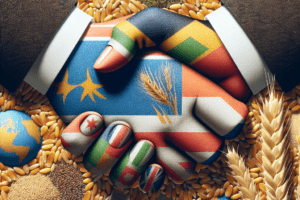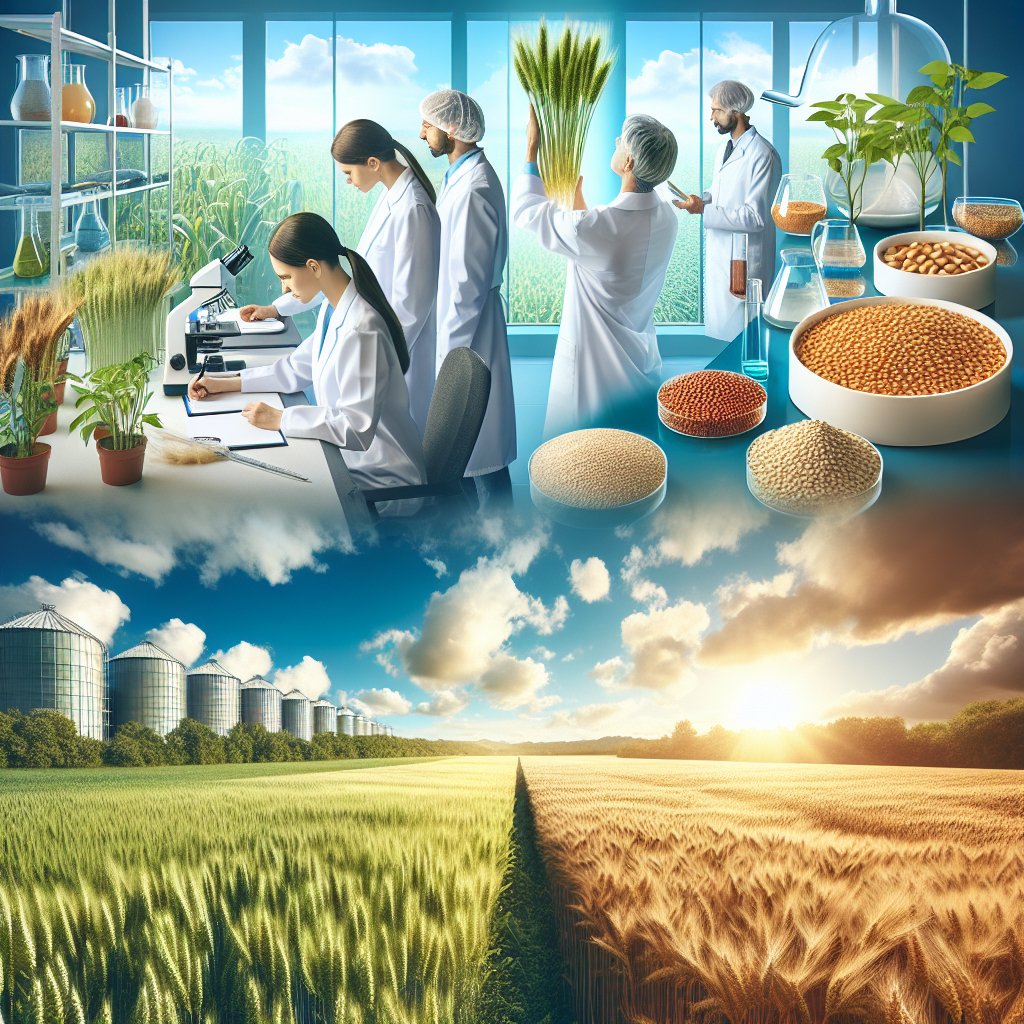The role of research in boosting grain productivity is crucial for ensuring food security and enhancing agricultural sustainability. As the global population continues to grow, the demand for grains such as wheat, rice, and maize increases, necessitating innovative approaches to improve yield and resilience. This article explores the various dimensions of research in grain production, including advancements in technology, breeding techniques, and sustainable practices that contribute to higher productivity.
Advancements in Agricultural Technology
Technological advancements have revolutionized the agricultural sector, particularly in grain production. Precision agriculture, which utilizes data analytics, GPS technology, and IoT devices, allows farmers to optimize their operations and make informed decisions. This section delves into the key technologies that are enhancing grain productivity.
Precision Agriculture
Precision agriculture involves the use of technology to monitor and manage field variability in crops. By employing sensors and drones, farmers can collect real-time data on soil conditions, crop health, and weather patterns. This information enables them to apply inputs such as water, fertilizers, and pesticides more efficiently, reducing waste and increasing yields.
- Soil Sensors: These devices measure soil moisture, temperature, and nutrient levels, allowing farmers to tailor their irrigation and fertilization practices.
- Drones: Equipped with cameras and sensors, drones can survey large areas of farmland quickly, providing insights into crop health and identifying areas that require attention.
- Data Analytics: By analyzing data collected from various sources, farmers can make predictive decisions that enhance productivity and reduce costs.
Biotechnology and Genetic Engineering
Biotechnology plays a significant role in developing high-yield and disease-resistant grain varieties. Genetic engineering techniques, such as CRISPR and transgenic methods, allow researchers to modify the genetic makeup of crops to enhance desirable traits.
- Genetic Modification: Crops can be engineered to withstand pests, diseases, and environmental stresses, leading to higher productivity and reduced reliance on chemical inputs.
- Marker-Assisted Selection: This technique accelerates the breeding process by identifying specific genes associated with desirable traits, enabling the development of improved varieties more quickly.
- Hybrid Varieties: The creation of hybrid grains has led to significant yield increases, as these varieties often exhibit greater vigor and resilience compared to their parent lines.
Sustainable Practices in Grain Production
As the agricultural sector faces challenges such as climate change and resource depletion, sustainable practices are becoming increasingly important. Research in this area focuses on methods that enhance productivity while minimizing environmental impact. This section examines some of the sustainable practices that are being adopted in grain production.
Conservation Agriculture
Conservation agriculture is a farming approach that promotes minimal soil disturbance, crop rotation, and cover cropping. These practices help maintain soil health, reduce erosion, and improve water retention, ultimately leading to increased grain productivity.
- No-Till Farming: By reducing soil disturbance, no-till farming helps preserve soil structure and moisture, leading to better crop yields.
- Crop Rotation: Rotating different crops in a field can break pest and disease cycles, improve soil fertility, and enhance overall productivity.
- Cover Cropping: Planting cover crops during the off-season helps prevent soil erosion, suppress weeds, and improve soil health.
Integrated Pest Management (IPM)
Integrated Pest Management (IPM) is a holistic approach to managing pests that combines biological, cultural, physical, and chemical tools. Research in IPM focuses on developing strategies that minimize the use of chemical pesticides while effectively controlling pest populations.
- Biological Control: Utilizing natural predators or parasites to manage pest populations can reduce the need for chemical interventions.
- Cultural Practices: Crop rotation, intercropping, and proper sanitation can help prevent pest outbreaks and reduce reliance on pesticides.
- Monitoring and Thresholds: Regular monitoring of pest populations allows farmers to make informed decisions about when to intervene, ensuring that pesticide use is both effective and minimal.
The Future of Grain Research
The future of grain research is promising, with ongoing advancements in technology and sustainable practices. As researchers continue to explore innovative solutions, the potential for increasing grain productivity while addressing environmental concerns becomes more attainable. This section discusses emerging trends and the importance of collaboration in grain research.
Emerging Trends in Grain Research
Several emerging trends are shaping the future of grain research, including the use of artificial intelligence (AI), machine learning, and big data analytics. These technologies are enabling researchers to analyze vast amounts of data and identify patterns that can inform breeding and management practices.
- AI and Machine Learning: These technologies can predict crop performance based on various environmental factors, helping researchers develop more resilient grain varieties.
- Big Data Analytics: The integration of data from multiple sources allows for a comprehensive understanding of agricultural systems, leading to more effective decision-making.
- Climate-Resilient Varieties: Research is increasingly focused on developing grain varieties that can withstand extreme weather conditions, ensuring food security in the face of climate change.
Collaboration and Knowledge Sharing
Collaboration among researchers, farmers, and policymakers is essential for advancing grain research and implementing effective solutions. Knowledge sharing through platforms such as agricultural extension services, workshops, and online forums can facilitate the dissemination of best practices and innovative technologies.
- Public-Private Partnerships: Collaborations between government agencies, research institutions, and private companies can accelerate the development and adoption of new technologies.
- Farmer Participation: Engaging farmers in research initiatives ensures that solutions are practical and tailored to local conditions.
- Global Research Networks: International collaboration can enhance knowledge sharing and resource allocation, addressing global challenges in grain production.
Conclusion
Research plays a pivotal role in boosting grain productivity, addressing the challenges posed by a growing population and environmental changes. Through advancements in technology, sustainable practices, and collaborative efforts, the agricultural sector can enhance grain production while ensuring environmental sustainability. As we look to the future, continued investment in research and innovation will be essential for achieving food security and promoting resilient agricultural systems worldwide.













